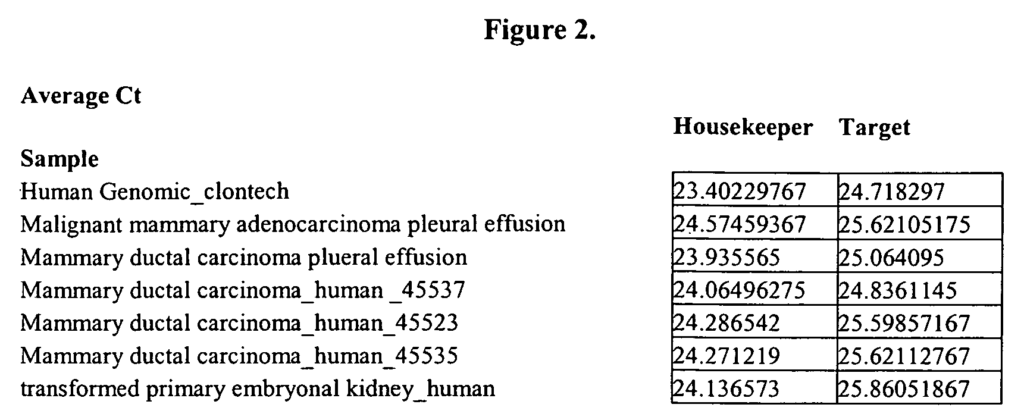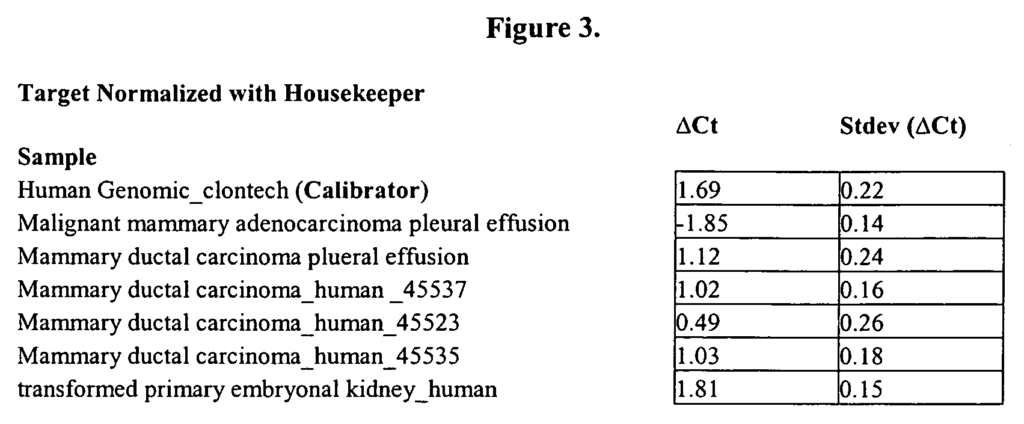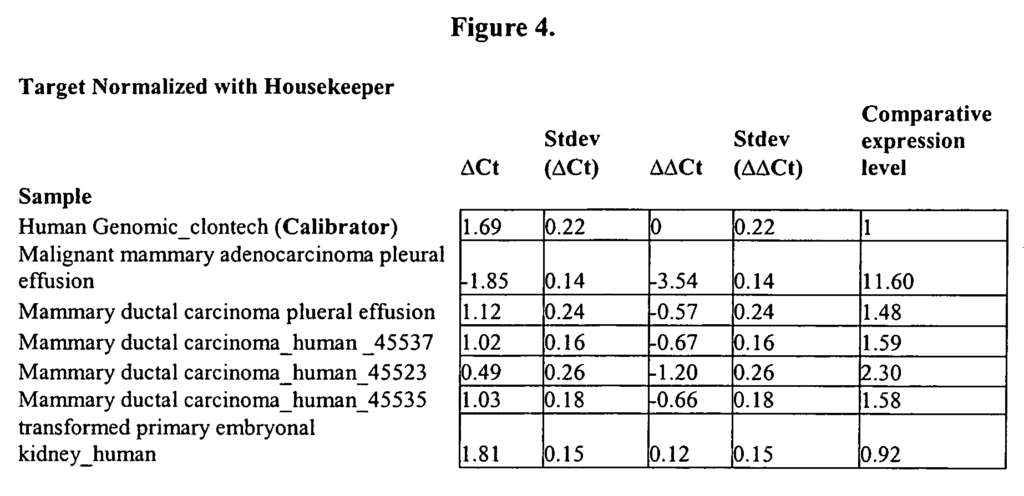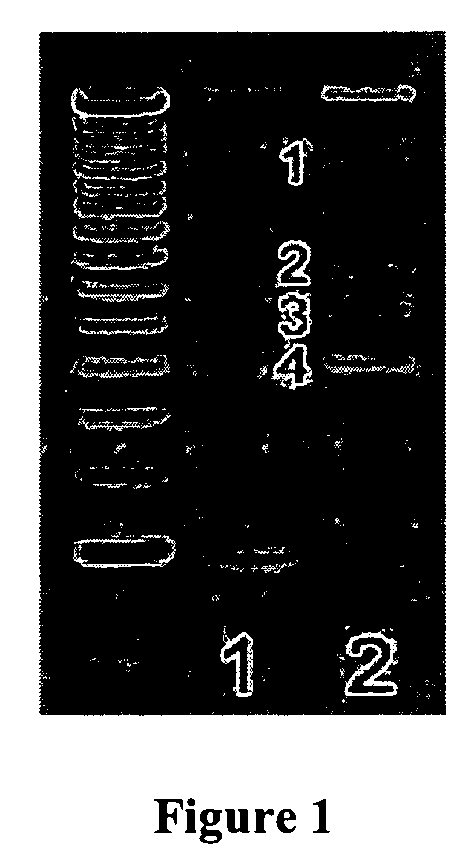Invented by David W. Morris, Marc S. Malandro, Albert Lai, Christin Tse, Ali Fattaey, Sagres Discovery Inc
Therapeutic targets are specific molecules or pathways within cancer cells that can be targeted by drugs to inhibit their growth or induce cell death. These targets can be proteins, enzymes, or even genetic mutations that are essential for the survival and proliferation of cancer cells. By identifying and targeting these specific molecules, researchers and pharmaceutical companies aim to develop more effective and personalized treatments for cancer patients.
One of the most significant advancements in the field of cancer therapeutics has been the development of targeted therapies. Unlike traditional chemotherapy, which indiscriminately kills both cancerous and healthy cells, targeted therapies specifically attack cancer cells while sparing healthy tissues. This approach not only reduces the side effects associated with treatment but also improves patient outcomes.
The market for therapeutic targets for cancer is driven by several factors. Firstly, the increasing prevalence of cancer worldwide has created a significant demand for new and improved treatment options. According to the World Health Organization, cancer is responsible for approximately 9.6 million deaths each year, making it one of the leading causes of mortality globally.
Secondly, advancements in genomics and molecular biology have revolutionized our understanding of cancer at the molecular level. This has allowed researchers to identify specific genetic mutations and molecular pathways that drive the development and progression of cancer. By targeting these specific molecules, researchers can develop drugs that selectively inhibit cancer cell growth, leading to more effective and personalized treatments.
Furthermore, the rise of precision medicine has further fueled the market for therapeutic targets for cancer. Precision medicine aims to tailor treatments to individual patients based on their unique genetic makeup and other molecular characteristics. By identifying specific therapeutic targets in each patient, physicians can prescribe targeted therapies that are more likely to be effective, leading to better patient outcomes.
The market for therapeutic targets for cancer is highly competitive, with numerous pharmaceutical companies and research institutions actively developing new drugs and therapies. The development process is complex and time-consuming, involving preclinical studies, clinical trials, and regulatory approvals. However, the potential rewards are significant, with successful drugs generating billions of dollars in revenue.
In conclusion, the market for therapeutic targets for cancer is rapidly expanding, driven by the increasing prevalence of the disease, advancements in genomics and molecular biology, and the rise of precision medicine. Targeted therapies offer the promise of more effective and personalized treatments, reducing side effects and improving patient outcomes. While the development process is challenging, the potential benefits make this an exciting and promising field for researchers, pharmaceutical companies, and most importantly, cancer patients.
The Sagres Discovery Inc invention works as follows
The present invention is a novel sequence for the detection, diagnosis, and treatment of cancers. The invention provides cancer associated (CA) polynucleotide sequencing whose expression is linked to cancer. The invention provides CA polypeptides that are associated with cancer and which are found on the surface of cells. These CA polypeptides can be used as novel therapeutic targets to combat cancer. The present invention also provides diagnostic compositions for cancer detection. The present invention contains monoclonal and multiclonal anti-CA polypeptide antibodies. “The present invention provides therapeutic compositions, methods and diagnostic tools for cancer screening, prevention and therapy.

Background for Therapeutic targets for cancer
Oncogenes can cause cancer. Carcinogenesis is caused by many different mechanisms. These include infection of cells with viruses that contain oncogenes; activation of protooncogenes within the host genome; and mutations to protooncogenes or tumor suppressor gene. The fundamental driving force behind carcinogenesis is somatic cell evolutionary changes (i.e. Natural selection and mutation of variants that result in progressive loss of growth-control. These genes are either tumor suppressors or protooncogenes, depending on their mutant phenotypes, dominant or recessive.
A number of viruses are known to play a role in both human and animal cancer. It is of particular interest to look at viruses that don’t contain oncogenes; they are slow-transforming, retroviruses. They cause tumors through integration into the host genome, and by affecting protooncogenes nearby in various ways. The retroviral cycle is normal and can lead to provirus insertion mutations. In infected cell, a DNA version of the retrovirus genome is integrated into host genome. One of two mechanisms can be used by a newly integrated retrovirus to affect gene expression near or at the integration site. Type I insertions increase transcription of nearby genes due to regulatory sequences within proviral LTRs. Type II insertions result in truncation due to integration either directly into an open reading frame, or within an intron flanked by coding sequences on both sides. Analysis of sequences near or at the insertion site has led to identification of several new protooncogenes.
The insertion sites of certain sequences have been identified as relevant in inducing lymphoma or leukemia. By analyzing insertion sites, a number of sequences were identified as being relevant to the induction of leukemia and lymphoma. See Sorensen et. al. J. of Virology 74 2161 (2000), Hansen et. al. Genome Res. The following references are incorporated herein by reference: 10(2):237-4 (2000), Sorensen et. al. J. Virology 69:4063 (1996), Sorensen et. al. J. Virology 67 :7118 (1993), Joosten et. al. Virology 268, 308 (2000), and Li et. al. Nature Genetics 23, 348 (1999). The mammalian virus, mouse mammary tumour virus (MMTV), is a powerful inducer of cancers. This includes breast cancer, prostate carcinoma, and cancers that have epithelial origin. Mammary Tumors in the Mouse, edited by J. Hilgers and M. Sluyser; Elsevier/North-Holland Biomedical Press; New York, N.Y.
The pattern of gene activity in a living cell is a good indicator of the current state of that cell. The RNA level of one or several genes is a good indicator of the current state of a living cell. The function of genes can be determined by comparing their expression patterns. The high-throughput analysis of the expression of thousands or hundreds of genes can be used to (a) identify complex genetic diseases (b) analyze differential gene expression between tissues, disease states and time and (c), aid in drug discovery and toxicology. The expression levels of specific genes are correlated with cancer biology. Oncogenes, for example, are positive regulators in tumorigenesis while tumor suppressors are negative regulators. (Marshall, Cell, 64: 313-326 (1991); Weinberg, Science, 254: 1138-1146 (1991)).
The invention aims to provide polynucleotide sequences and polypeptides that are involved in cancer, and in particular oncogenesis.
This invention also aims to provide antigens associated with cancer-associated polypeptides that can be used as targets for diagnostic or therapeutic antibodies. These antigens can also be used for drug discovery, e.g. small molecules, and to further characterize cellular growth and differentiation.
In accordance with the above-mentioned objects, the present invention offers methods for screening compositions that modulate cancers, particularly lymphoma, and leukemia. The present invention provides screening methods for cancers, particularly mammary carcinomas. Herein, methods are also provided for inhibiting the proliferation of a particular cell type. This cell is preferably a cancerous breast or lymphoma. Herein are also described methods of treating cancer, including the diagnosis.
In one aspect of a screening method for drug candidates, the cell is provided that expresses fragments or a CA gene. CA genes are preferably genes that are differentially transcribed in cancer cells. These are preferably lymphatic cells, breast cells, prostate cells or epithelial cell types. The preferred embodiments of CA gene used in the present methods include, but aren’t limited to, the nucleic acid sequences selected from Tables 1-16. These sequences correspond to human mRNAs. The methods also include adding a candidate drug to the cell, and determining its effect on the expression.
In one embodiment, a method for screening drug candidates compares the level expression of the drug in the absence and presence of the candidate.
Also disclosed herein is a screening method for a bioactive molecule capable of binding to CA proteins (CAP), which comprises combining CAP with a candidate bioactive molecule, and determining its binding to the CA protein.

The invention also provides a screening method to identify a bioactive compound capable of modulating a CAP’s activity. In one embodiment, combining CAP with a bioactive candidate agent and determining its effect on bioactivity is the method.
Also disclosed is a method for evaluating the effects of a cancer drug candidate, which comprises administering the drug and removing cells from a patient. The cell’s expression profile is determined. This method can also include comparing the patient’s expression profile to that of a healthy person.
In a second aspect, the method is described as a way to inhibit the activity of CA proteins. In one embodiment of the method, it involves administering to the patient an inhibitor for a CA-protein, which is preferably chosen from the sequences listed in Tables 1-16.
The invention also provides a method for neutralizing the effects of a CA-protein, which is preferably encoded by one of the nucleic acids listed in Tables 1-16. These sequences include human genomic sequences SEQID NOS 4, 10, 18, 26, 44, 50 60, 82, 88, 112, 128, 136 and 154 and sequences SEQID NOS 5, 11, 13, 29, 35, 41, 43, 39, 45, 51, 53, 55, 56, 65, 70, 75 The method preferably comprises contacting a protein-specific agent in a sufficient amount to neutralize the protein.
Furthermore, herein is provided a biochip which comprises a nucleic-acid segment that encodes a CAprotein, selected preferably from the sequences listed in Tables 1-16. (SEQ ID NoS: 5, 11, 13 19, 27, 29, 35, 37, 39, 45, 51, 53, 55, 60, 65, 70, 75, 80, 85, 90, 95, 99, 101,103,105,107,113,115,117
The invention also provides a method to diagnose or determine the propensity for cancers such as lymphoma, leukemia or carcinomas by sequencing one or more carcinoma or lymphoma genes of an individual. A method for determining cancer, including leukemia and lymphoma gene copy numbers in an individuals is also provided.
The invention is an isolated nucleic containing at least 10, 12, 15 or 20 contiguous nucleotides from a sequence chosen from the following polynucleotide series: SEQ ID NOS 5, 11, 13, 19; 25, 37, 39; 45, 51,53, 55, 60, 65,67,69, 70,73,75,83,89,91,93,95,97,99, 101,103,105,107,113,115,117,123,129,137,139 145 144
In some embodiments, a polynucleotide or its complement, or a fragment thereof may also include a detectable label. It can be attached to a solid substrate, prepared in part chemically, an antisense fragment or it could be single-stranded.
The invention provides an isolate polypeptide. This polypeptide contains the amino acid sequence encoded by a polynucleotide selected from SEQ ID NoS: 5, 11, 13, 19, 27, 29, 35, 37, 39, 45, 51, 53, 55, 61, The invention provides an isolate polypeptide wherein said polypeptide contains the amino acid encoded by a selected polynucleotide from the group consisting SEQ ID NoS: 5, 11, 13 19, 27, 29, 35, 37, 38, 45, 51, 52 The invention provides an isolate polypeptide. This polypeptide contains the amino acid encoded by polypeptides selected from SEQ ID NoS: 6, 12, 14 20, 28, 30, 36, 38, 42, 48, 50, 52, 54, 56, 60, 64, 65
The invention also provides an isolated monopeptide comprising an amino acid-sequence of an epitope from the amino-sequence of a CA polypeptide. This polypeptide may be attached to solid support. In one embodiment, the invention provides a monoclonal antibody or antigen-binding fragment of such an antigen. The isolated antigen-binding fragment or monoclonal antibody may be attached to solid support or include a detectable label.

Click here to view the patent on Google Patents.

Leave a Reply